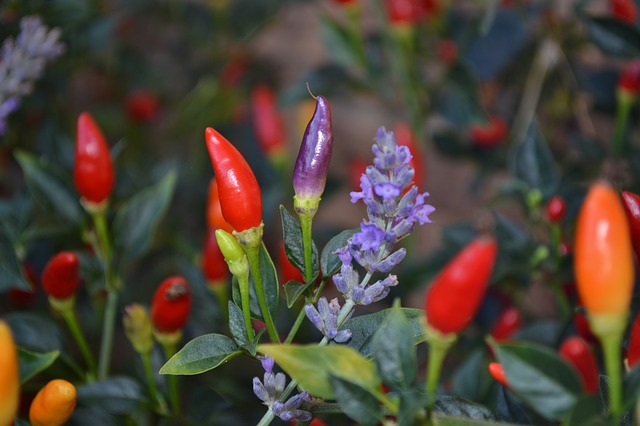Companion Planting– your complete and in depth overview.

Companion Planting useful vegetables and flowers side by side can get you the very best results in your garden.
Our professional gardener will teach you how, to Companion Plant in your garden.
Companion Planting– growing certain plants or flowers alongside for beneficial results– is a method that has actually been used by farmers for countless years.
It likewise takes place naturally in nature, where specific plants grow with each other while others are never ever seen in each other’s area.
We can discover a lot from this as well as make use of companion planting in our very own yards– especially companion growing veggies.
With many different types of vegetables and fruit to plant, it can occasionally be overwhelming to know what to plant. Yet you can take advantage of your garden by growing helpful companions.
That can help boost home-grown produce by taking care of bugs, promoting pollination, influencing ground nutrients and also maintaining variety.
Scroll down to discover what you should as well as shouldn’t be growing together.
WHAT IS Companion Planting?
Companion planting simply refers to growing 2 or even more types of plants with each other for a helpful impact, which is generally used in the vegetable garden.
How does companion planting work?
Promotes growth.; Some companion plants actually assist each other to expand and also prosper, offering support, shelter and also root space, boosting the manufacturing, improving the taste, or developing better biodiversity.
Discourage insects: Others taste bitter or are harmful to parasites like aphids, so act as natural insect deterrents, such as Artemisia absinthium, tansy and also pyrethrum daisies.
Specific companion growing gives off repelling chemicals that discourage detrimental pests, including rosemary, lavender as well as mint.
Brings in pollinators: Lots of flowers bring in bees and other pollinating insects, which boosts the yield of vegetable garden and also is handy for a balanced yard and also the eco-system.
What are the advantages of companion planting in your vegetable garden?
There is a selection of benefits to companion planting in an natural garden.
Companion plants assist to shield the soil, suppress weeds, fill in any kind of voids as well as increase biodiversity,
The more varied planting the better. A handy variety of plants and companions, allows even more diversity in a small space, while assisting you, at the same time.
Solitary crop garden beds (Mono-Cropping) can end up being pestered by pests, while mixing plants together confuses and deters pests.
We all do better with others in our lives and plants are no different, helping each other out, whether by working as an attraction, drawing in useful insects or improving the soil.

Amazingly, companion plants are just as beautiful as well as often edible– so include them in your garden no matter the size of it.
Choose plants that have good manners as well as do not encroach on each other’s area.
By rotating crops the soil is not diminished of nutrients, and it is really satisfying planting pieces of art made of various vegetables each season.
Companion planting vegetables as well as fruit.
Below are instances of veggies and plants that work well side by side, either since they hinder aphids, bring in pollinators, enrich the soil, bring in pests away from the neighbour plant, or enhance the flavor of the companion vegetable.
As an example, companion planting tomatoes with basil is said to improve the return, draw in whitefly away from the tomato plants, as well as boost the taste of the fruit.
Similarly, there are vegetables and also flowers that you must not planting alongside.
This might be since they compete for area, light, water, soil nutrients, or bring in bugs destructive to the companion plants.
Beans, Companion Planting.
Companion plant with corn, squash, carrots, summer season full-flavored, sweet peas, cabbage, beetroot.
AVOID onion family members, fennel, sunflowers.
Broccoli, Companion Planting.
Companion plant with chard, radishes, onions, mint, spinach, beetroot, celery, sage, oregano, rosemary.
AVOID tomatoes, squash, strawberries, corn, pumpkins, asparagus, peppers.
Carrots, Companion Planting.
Companion plant with onions, leeks, beans, brassicas, lettuce, peas, beans, sage, rosemary, tomatoes, melons, alliums.
AVOID potatoes, dill, parsnips, celery, radish.
Cucumbers, Companion Planting.
Companion plant with peas, beans, corn, radishes, onions, carrots, beetroots, cabbages, peppers, dill, oregano, nasturtiums, marigolds.
AVOID potatoes, sage, melons.
Tomatoes, Companion Planting.
Companion plant with basil, mint, beans, lettuce, garlic, squash, thyme, French marigolds, calendula, chives, asparagus, nasturtiums, universes, amaranth.
AVOID potatoes, brassicas, aubergine, peppers, fennel, kohlrabi, corn, dill.
Potatoes, Companion Planting.
Companion plant with horseradish, beans, basil, cabbages, corn, chamomile, alyssum, thyme, petunias, lamium, sage, nasturtium, coriander, tansy, nepeta, marigolds.
AVOID squash, asparagus, nightshade family members, fennel, sunflowers, raspberries, strawberries.
Strawberries, Companion Planting.
Companion plant with asparagus, beans, borage, spinach, lettuce, garlic, onion, peas, thyme, horseradish, rhubarb, marigolds, chives.
AVOID cauliflower, cabbages, broccoli, fennel, tomatoes, potatoes, melons, peppers, mint.
Peppers, Companion Planting.
Companion plant with carrots, cucumbers, endive, aubergine, allium family, asparagus, squash, basil, parsley, oregano.
AVOID beans, brassicas, fennel, strawberries.
Onions, Companion Planting.
Companion plant with cabbage family members, tomatoes, lettuce, peppers, chard, strawberries, dill, parsley, mint, chamomile, summer season tasty.
AVOID beans, peas, sage, asparagus.
Leeks, Companion Planting.
Companion plant with carrots, onions, garlic, beets, celery, tomatoes, fruit trees, parsley. AVOID beans, legumes, swiss chard.
FLOWERS AS COMPANION PLANTS.

There are very easy and also attractive selections of flowers for buddy growing with veggies.
Some of the very best are marigolds, nasturtiums and calendula.
Nasturtiums assist to deter aphids as well as are usually made use of as a sacrificial plant so aphids and also black fly strike them yet steer clear of from your valuable veggies.
Calendulas are loved by bees and also hoverflies, while the solid fragrance of marigolds confuses bugs.
Calendula not only shines with jubilant orange from very early summertime to fall, but is a fantastic edible as well as medical plant that also repels whitefly from tomatoes, distracts aphids from crops and motivates beneficial bugs.
Calendula is in the Asteraceae family, a group that has an important healthy protein in its plant pollen that permits beneficial pests, such as hoverflies as well as lacewings, to lay viable eggs.
Other good selections are Erigeron karvinskianus, a terrific, resilient as well as passionate filler of spaces, Dyer’s chamomile, and also sunflowers.
COMPANION GROWING NATURAL HERBS
Mix herbs, consisting of thyme, oregano, rosemary, mint and lavender companion plants.
Through your garden to assist to ward off bugs with their aromatic vegetation and also to bring in pollinators.
As herbs heal us they can additionally heal other plants; for example. Chamomile alongside an ailing hedge is an all-natural anti-fungal.
COMPANION GROWING POINTERS
Interplant strawberries with veggies as well as herbs to hide them from birds and pests.
Try the ‘Three Siblings’ approach: Some companion planting mixes provide a physical advantage.
— As an example the ‘Three Siblings’ method with beans, corn and squash.
Beans utilise corn as a trellace while fixing nitrogen at their roots; squash sprawls and also aids cover weeds.
Legumes
Use legumes, which help various other plants by releasing nitrogen right into the soil.
Enhance flavor: Companion planting pairings to improve flavor include basil with tomatoes, borage to sweeten strawberries, as well as dill near corn.
Plant marigolds to suppress plant-parasitic nematodes.
Plant peas: fruit shrubs and also trees grown with peas, beans and pleasant peas will flourish.– the nitrogen from pea family roots helps increase the harvest.
Other
Plant pest as well as bird-friendly companion plants to draw in pollinators and also all-natural killers.
Separate members of the exact same plant family members.– growing them together enhances competition for soil nutrients, so it is best to spread them throughout your veggie garden.
Utilising companion planting in your vegetable garden, raised beds not only just makes good horticulture sense, but it will compensate you in many more ways.
I sincerely hope that you have found this article on Companion Planting Useful.
If you have any comments please drop a note below, happy gardening, and planting companions.
Matthew du Preez.
